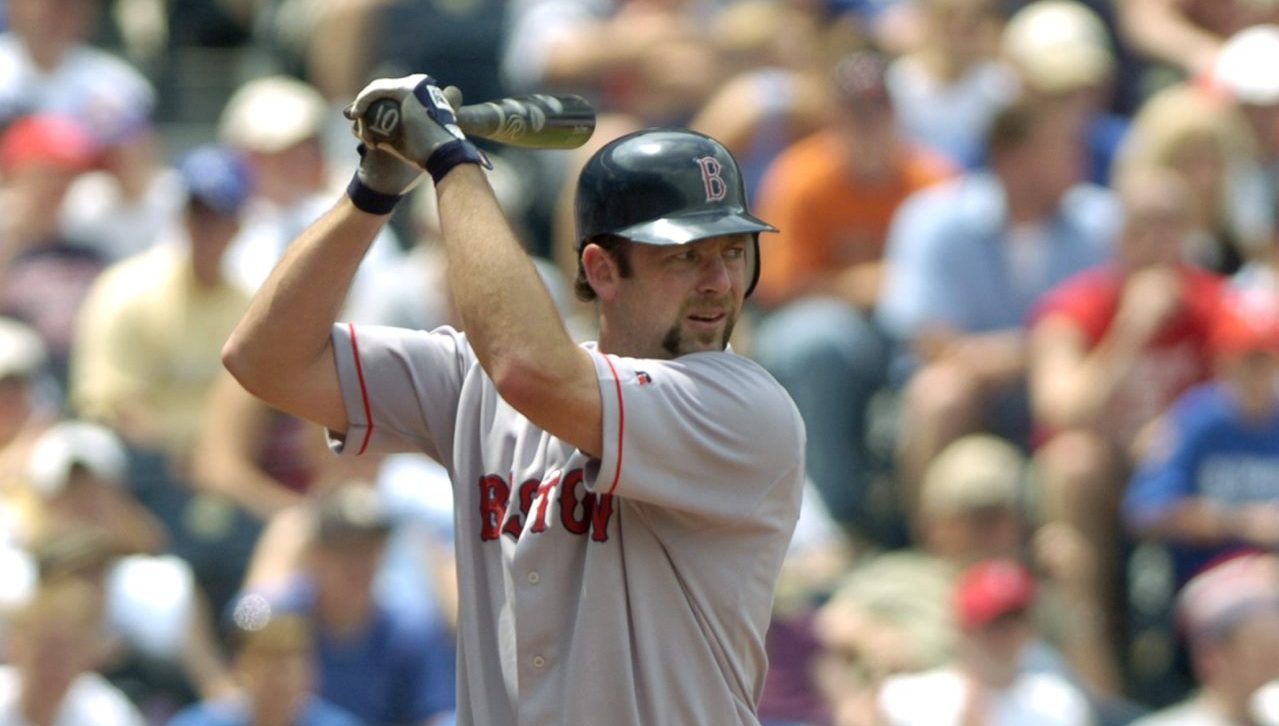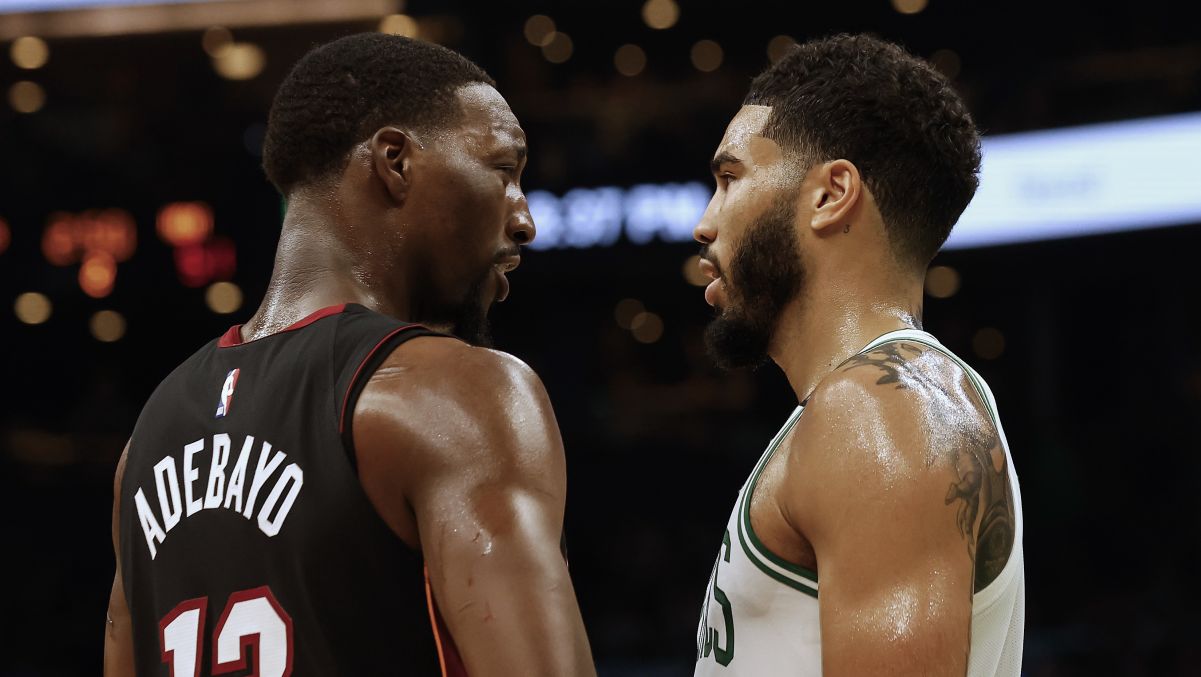Mookie Betts and J.D. Martinez complement each other as well as any two players in baseball. Since the start of 2018, no one has scored more runs than Betts (264) or driven in more than Martinez (235). That's no coincidence.
But now the Red Sox face a stomach-churning dilemma: choosing between them.
Martinez's decision not to opt out of the remaining three years on his contract means that not only will he return in 2020, but the Red Sox will have $23.75 million less to spend on Betts, were they feeling inclined to keep him.
With ownership declaring it hopes to see the payroll drop below $208 million for luxury-tax purposes, it's hard to envision a scenario where both Martinez and Betts open the season on the roster. And so the next three months will be spent trying to find a new home for one of them.
It's a choice that feels like a loss no matter what the Red Sox choose, but if they can only keep one, it should be Martinez.
It sounds crazy, because Betts is clearly the better all-around player and he's in his prime. What big-market team trades a 27-year-old barely a year removed from winning the MVP?
But the Red Sox need to start thinking long-term after three years of loading for bear. Bad contracts to David Price, Chris Sale, and Nathan Eovaldi will almost certainly hamstring the franchise for the next three years at $79 million per. That's no way to sustain success, and I don't begrudge John Henry for setting limits.
Local
In-depth news coverage of the Greater Boston Area.
While it's tempting to say that Betts is paying the price for those horrible decisions, it also ignores the truth: 10-year, $300 million contracts aren't good business. I wouldn't pay that to anyone. Even Betts.
Angels superstar Mike Trout will probably claim his third MVP next week after another absurd season that saw him blast a career-high 45 homers. That makes his 12-year, $428 million extension money well spent, right? Well, foot surgery ended his season in September. Maybe it's nothing, but he has missed at least 20 games each of the past three seasons. The Angels need no reminder of what his 30s might look like, because all they've gotten out of Albert Pujols's 10-year deal (signed at age 32, to be fair) since 2012 is one All-Star berth. Trout's on another level athletically, but that's part of the problem -- he plays like a freight train. If he wears down, it won't be reflected in his paycheck.
The same goes for Bryce Harper, who delivered solid overall numbers in the first year of his 13-year, $330 million megadeal with the Phillies, but was sitting at home when his former team, the Nationals, won it all. Last winter's other $300 million man, Manny Machado, hit .256 with a .796 OPS in San Diego, which is a big bag of meh.
Betts is better than everyone on this list except Trout, but he's also smaller than them at 5-9, 180. As great as he is now, signing him into his late 30s for more than $30 million annually is the definition of risky. What if he loses a step in the outfield, or the lightning in his wrists suffers a voltage drop? When the Red Sox signed Dustin Pedroia to an eight-year deal in July of 2013, they couldn't have imagined that he had just made his final All-Star team, or that he'd appear in more than 135 games just once before a degenerative knee condition effectively ended his career.
Maybe Betts is Manny Ramirez or Alex Rodriguez, two stars who delivered on massive deals. Then again, both of them were busted multiple times for using performance-enhancing drugs, and baseball's crackdown on those has led to a reevaluation of aging curves, which are steeper in their 30s than they used to be.
Martinez, meanwhile, represents cost certainty. He's signed for three more years, but can opt out of either of the next two. He plays a far less demanding position and style than Betts, and it's much easier to envision him delivering value commensurate with the $62.5 million remaining on his deal. He has averaged .317-40-118 in his first two seasons with the Red Sox, and he continues a trend that has existed since the heyday of David Ortiz, giving Boston far and away the best DH production in baseball. Paying him $23 million a year to mash while other teams split their DH slot among aging one-dimensional sluggers or glorified bench rotations feels like exploiting a market inefficiency.
I would argue that Martinez's presence is more important to the lineup than Betts', and I suspect Betts would agree. It's easier to be a table-setter than a table, to steal an old line from Pedroia, and Martinez is the latter, taking the heat off everyone else. Even in an era defined by analytics, the mental strain that Martinez eases by being The Guy means more than numbers can convey.
There's an obvious counterargument to all of this: keep them both. The Red Sox aren't poor, and Henry's desire to cut payroll is based on the artificial barriers created by the luxury tax. Outside of some minor draft order penalties, all that going over costs anyone is money, and Henry can afford it -- another $240 million payroll in 2020 might cost the Red Sox $20 million in tax payments, for instance. That's easy to dismiss when it's someone else's money and that someone else is a billionaire.
My counterargument to that counterargument would be that Henry has never been shy about spending, and if he looks at this past season's underachieving roster and sees more problems on the horizon because of bad investments, I can't blame him. After all, it's not like he hired Chaim Bloom from small-market Tampa to make it rain.
The next great Red Sox team won't be bloated like this one. Betts isn't part of that problem, but give him $350 million and he could be. Better to pay Martinez a more reasonable sum and trust that the team's considerable resources can be spread around to make up the difference.
Click here to download the new MyTeams App by NBC Sports! Receive comprehensive coverage of your teams and stream the Celtics easily on your device.



